The No Surprises Act prohibits balance billing in the case of surprise medical bills — those for non-emergency services furnished by out-of-network providers during a visit by the patient at an in-network facility — unless the law’s notice and consent requirements are met, according to the Interim Final Rule published earlier this summer. Out-of-network providers are subject to the same rules as emergency services providers.
The legislation, which takes effect on January 1, 2022, limits patient liability for certain unavoidable out-of-network services, prohibits providers and facilities from balance billing patients for those services, and requires the creation of dispute resolution processes for patients, providers, and insurers to address unexpected medical bills.
The No Surprises Act, in particular, relates to self-funded employer insurance plans established under the Employee Retirement Income Security Act (ERISA plans) and air ambulance services, two crucial sectors where states have been unable to intervene due to federal law. Both of these topics are covered in the Interim Final Rule.
The Interim Final Rule is a significant step forward in the difficult and fast changing regulatory landscape of balance billing. This rulemaking must be noted by healthcare providers and payors, who must act rapidly to meet the requirements.
There are three types of out-of-network claims subject to the No Surprises Act
- Emergency Services
- Non-emergency services by out-of-network providers at an in-network health facility
- Air Ambulance Claims
Federal protection against surprise billing is long overdue. Many states, including California, Florida, and New York, have put in place surprise-billing legislation in attempt to protect consumers, lower out-of-network prices, and indirectly lower in-network prices by changing payer-practitioner negotiating dynamics.
In a recent retrospective study published by JAMA, it was found that prices paid to in-network and out-of-network anesthesiologists in hospital outpatient departments and ambulatory surgery centers decreased after the introduction of surprise-billing legislation.
This enables early forecasting of how prices may change under the federal No Surprises Act, and the results are promising. It was found that the unit price paid to out-of-network anesthesiologists at in-network facilities decreased significantly in 2 of them: California, −$12.71 and Florida, −$35.67. In New York, a decline in the overall out-of-network price was not statistically significant, however, by the fourth quarter of 2017, the decline was −$41.28. In-network prices decreased in California by −$10.68; in Florida, −$3.18; and in New York, −$8.05.
The study noted that the three states had some differences in how they implemented their surprise billing laws. The main differences were in the methods of determining prices paid for out-of-network services. California and Florida tied payments to median in-network rates. New York, on the other hand, established an independent dispute resolution process, using a third-party arbiter to resolve payment disputes between insurers and providers.
The current language of the federal No Surprises Act calls for arbitration of disputes, like the New York approach. However, the new federal legislation is still undergoing review, and it remains to be seen how well it works on a federal level, given the complexity and variation of providers and payers on a national scale. The study’s findings suggest that consumers may see at least some relief from higher bills due to out-of-network services such as anesthesiology.
The future impact of this regulation is something that hits close to home. During the summer of 2016, I received an ACL Repair Surgery. I educated myself regarding my deductible and out-of-pocket exposure, ensuring that the provider was in-network. Given the information I had gathered, I understood that I would reach meet my out-of-pocket maximum. And then, about six weeks later, I received a bill from the anesthesiologist, and to my surprise, the provider was out-of-network. So, in-network facility, in-network surgeon, out-of-network anesthesiologist. This means that, on top of meeting my $3000 out-of-pocket maximum, I was now financially obligated to pay an additional $2500. I was angry. I wanted to know who within the operating room knew that the anesthesiologist was out-of-network. Why was I not informed? I, like many Americans, was not prepared to outlay over $2000 unexpectedly. But I knew that, if I didn’t pay, my credit score would be impacted and have long-term consequences upon my financial future. So, I proceeded to set up a payment plan, received a 20% discount, and paid off my debt over the next six months.
Not a great consumer experience, and one that happens frequently within healthcare. One in 5 insured adults in the past 2 years received a surprise bill because the provider was out-of-network, with two in three adults concerned about unexpected medical bills. Additionally, about half of adults who had received an unexpected medical bill faced an amount of $500 or more. Over 40% of those respondents indicated they would not be able to immediately afford the sizable unexpected medical bill.
Given the study’s results above and the impending No Surprises Act implementation, it appears that there are finally substantial protections in place for healthcare consumers. And for too long, healthcare consumers have shouldered the burden of the unsustainable healthcare costs levied upon them by payors and providers. A more even playing field is on its way.
